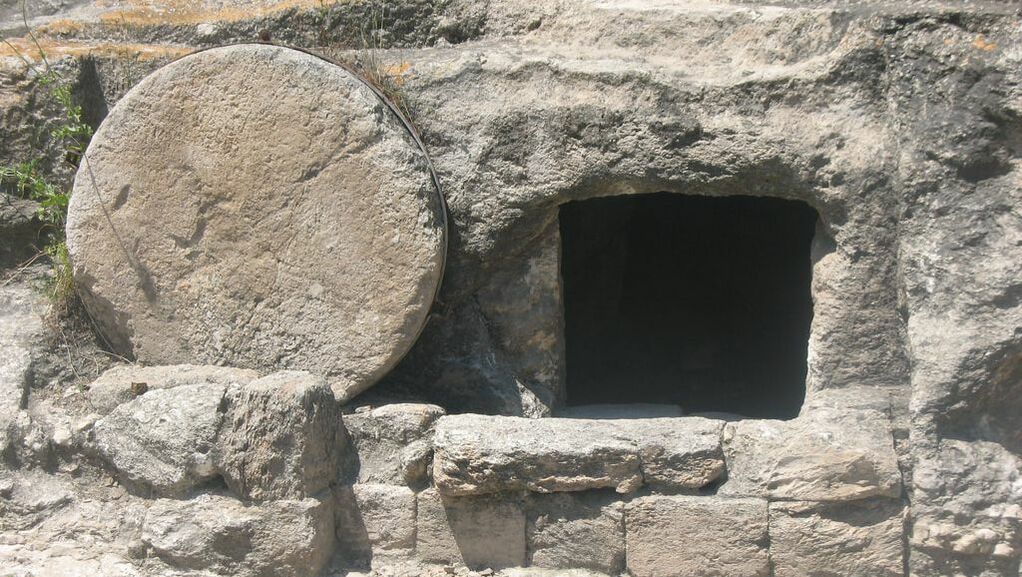The women who went to the tomb early that day went to prepare Jesus’ body for the period of mourning. (Luke 23:55–24:1) They knew where Jesus’ body was because they had intentionally followed Joseph of Arimathea who, with the permission of Pontius Pilate, had placed Jesus' body in a new tomb.You have to think unkindly about these women if you suppose they were overcome with emotion, a bit dippy, or lacked the intelligence to recognise the place their friend was buried. This was a special tomb which had been prepared in a garden for a wealthy man. In addition to knowing where Jesus was buried, it was further identified by a guard of Roman soldiers who had sealed the tomb. The tomb would have been hard to miss. Especially as, following an earthquake there was an angel in glowing clothes sitting on the grave stone while the terrified guards trembled and played dead.
The angel spoke of Jesus being risen, but I draw your attention to his words, Come and see the place where he lay. Then go quickly and tell his disciples (Matthew 28:6–7). Come and see – go and tell is at the heart of Christian life. Not long afterwards the women encountered the risen Jesus who said to them, Go and tell my brothers to go to Galilee; there they will see me. (Matthew 28:10) Come and see, go and tell - this was how the good news of Jesus’ resurrection was to be spread. These women were the first to be given the good news to share.
Come see – Go tell are bookends of Jesus’ ministry. In chapter one of John’s gospel two disciples began to follow Jesus wanting to spend time with him. They asked him, where are you staying to which he replied Come and you will see. (John 1:36–39) This was not a simple question about accommodation. Gary writes, This language is consciously designed to describe discipleship: to follow, to come and see and to stay, remain each describe aspects of discipleship. Come and see, go and tell is a common pattern of people becoming disciples of Jesus.
Among Jesus’ final words to his disciples we read, Therefore go and make disciples of all nations … (Matthew 28:19) This is the great commission. It is as if Jesus was saying, You have seen all I have done, taught and commanded … therefore go.
John’s gospel begins with Jesus saying come and see, while Matthew's gospel ends with go and tell. Come see, go tell – this is how the good news spreads. At Greyfriars we have opportunities to come and see, Sunday Services, Growth Groups, kidzone and youth group. We go and tell through a variety of ministries including our prison ministry, holiday programmes, playgroup, mainly music and others. To go and tell others can be a normal conversation in which we listen and care so the people we are speaking with know it is safe to be open and share. This doesn’t need to be a religious conversation, it can simply be two friends talking about things that matter to them, sometimes the deep things of faith.
Let's be followers of Jesus who come see, and go tell.
Rev John Malcolm
If you would like to learn more about sharing your faith you might like to watch these videos by Jim Denison and Gregory Koukl.

